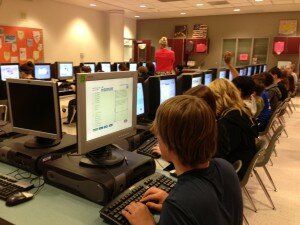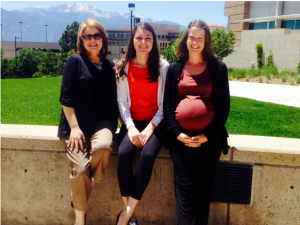Archives
| M | T | W | T | F | S | S |
|---|---|---|---|---|---|---|
| « Oct | Feb » | |||||
| 1 | 2 | 3 | 4 | 5 | 6 | 7 |
| 8 | 9 | 10 | 11 | 12 | 13 | 14 |
| 15 | 16 | 17 | 18 | 19 | 20 | 21 |
| 22 | 23 | 24 | 25 | 26 | 27 | 28 |
| 29 | 30 | 31 | ||||
LMS?!
My Question: In its current form, does an LMS help, or hinder learning?
 I share a lot of articles and resources with my PLN on a regular basis, usually adding a few words to share my reaction to the item. I often get retweets, and sometimes, a thank you or a few tweets exchanged, but every now and then, something really special happens. Sharing Audrey Watter’s blog post “Beyond the LMS” in September was one of those special moments. This blog post seemed to hit a nerve with several others in my PLN. There was a desire to talk it out, exchange more thoughts and ideas, more resources, and gain a better understanding. My friend and fellow Coloradan, Jessica Raleigh, () responded to my comment in a Google Hangout, “This really made me think!” sharing that it made her think too! She offered to put together a Voxer group to discuss, and proceeded to invite others to join us. I had no idea how to use Voxer – I don’t think I had ever heard of it before then, so I was excited to learn this new tool on the way to gaining a better understanding of LMSs. Soon, we were joined by Chris Rogers () and Sarah Thomas (), as well as Lisa Goochee ()
I share a lot of articles and resources with my PLN on a regular basis, usually adding a few words to share my reaction to the item. I often get retweets, and sometimes, a thank you or a few tweets exchanged, but every now and then, something really special happens. Sharing Audrey Watter’s blog post “Beyond the LMS” in September was one of those special moments. This blog post seemed to hit a nerve with several others in my PLN. There was a desire to talk it out, exchange more thoughts and ideas, more resources, and gain a better understanding. My friend and fellow Coloradan, Jessica Raleigh, () responded to my comment in a Google Hangout, “This really made me think!” sharing that it made her think too! She offered to put together a Voxer group to discuss, and proceeded to invite others to join us. I had no idea how to use Voxer – I don’t think I had ever heard of it before then, so I was excited to learn this new tool on the way to gaining a better understanding of LMSs. Soon, we were joined by Chris Rogers () and Sarah Thomas (), as well as Lisa Goochee ()
Thus, the stage was set for our learning. We had:
Note that there is no LMS in this learning scenario. It is happening freely, serendipitously, utilizing social media of many kinds. No one gave us this “assignment.” We all participated in this learning out of our personal desires to know and understand, in order to best meet the needs of the students we serve.
Over the course of 4 months, we have discussed, shared additional articles, and even wrote ( and it was accepted!) a proposal for an unconference-style conversation on LMSs at this summer’s InnEdCo conference in Keystone, Colorado. We have tweeted, blogged, Voxed, curated, and texted each other sharing our “ahas,” additional resources, and further questions. Some things we discussed included:
-The word “management” is problematic. Who should manage a student’s learning? It seems to be more about control. It can stifle learning.
-The LMS is like a walled garden. We need to open up that garden and let students interact in the “real world.”
-The LMS could best be viewed as “training wheels” – but eventually, those training wheels need to come off.
- The LMS affords some level of accountability and safety. This is why it may always be with us. This means we need to find a balance between management & control and, well – learning!
Here’s the thing. We have been participating in really wonderful, self-directed, unfettered learning. On our own terms. In our own time. With the tools of our choice. It has been a powerful, heady experience! Relationships have formed – even though most of us have never met face-to-face!
This is what I want for our students. What are the chances that this kind of learning could take place inside an LMS? That is the question that continues to haunt me.
What I see in practice is that the LMS basically picks up the 20th century teaching and information delivery style, and transfers it into electronic format. The LMS seems to make the S (substitution) in the SAMR model easiest to accomplish. It is hard for a teacher and students to form relationships inside its electronic walls. It is hard to foster creativity.
When I have been a student using an LMS, I have felt isolated and alone, other than a very artificial sense of community in the “mandatory” participation in the forums. Some comments there seem so contrived, they are laughable.
This is not the kind of learning I want for our students.
So, I will continue to seek answers, and try to find that perfect balance. I am excited that we have an opportunity to draw even more people in our conversation at InnEdCo.
I’d love to know your thoughts on the LMS. What do you think? Does it help, or hinder learning?
Ed-tech must not become an extraction effort, and it increasingly is. The future, I think we’ll find, will be a reclamation project. Ed-tech must not be about building digital walls around students and content and courses. We have, thanks to the Web, an opportunity to build connections, build networks, not walls. – Audrey Watters
Bringing Innovation to High School
Do high schools today provide opportunities for students to innovate? This was the question that 3 high school science teachers in our “Creating Innovators” grant project kept asking themselves as they were reading Tony Wagner’s book Creating Innovators during our project’s book study. It seemed apparent that very few of the innovators described in the book attributed any of their innovative nature to teachers or mentors in their high school. Upon further reflection, these teachers, Kristi Follett, Heather Wendt and Niki Juhl realized that providing opportunities for innovation while still meeting content requirements and within the current school structure and time constraints is next to impossible, so they set out to do something about it.
In researching examples of innovation in the Colorado Springs area, they learned about a unique program at the University of Colorado, Colorado Springs: the world’s only Bachelor of Innovation Degree Program. This program offers Bachelor of Innovation degrees in six different majors: Business, Computer Science, Computer Security, Electrical Engineering, Game Design and Development and Inclusive Early Childhood Education. No matter which area students major in, all students in the program must complete 27 credit hours of the Innovation Core courses, to include courses in entrepreneurship, the innovative process, business and intellectual property law, technical writing, proposals & presentations, and innovation teams, to include analyze, report, research, execute, design, lead, and strategy. Students in this program work with real clients, write grants, design programs, and solve real-world problems.
Creativity is thinking up new things. Innovation is doing new things. – Theodore Levitt
Kristi, Heather & Niki reached out to the BI program via the visionary founder, Dr. Terry Boult, and Co-Director of of Strategic Alliances, Dr. Colleen Stiles. After multiple conversations, a true collaborative partnership emerged. One of the UCCS BI Innovative Teams classes adopted these 3 science teachers as a client. The problem they were trying to solve? How to bring  innovative learning opportunities to high school science classes. The result? The UCCS students worked with Kristi, Heather and Niki to design an elective science course, I.D.E.A.S. – “Innovative Design in Educational Alliances for STEM.” The program is rooted in standards for Science, English, and Math, but also addresses all parts of innovation: funding, teams, process, and protection of ideas – and 21st century skills. Essentially, high school students will be mentored by UCCS BI students and participate on innovative teams applying science knowledge to solve real world problems for clients. The BI students are currently seeking funding for the program, and are prepared to assist when it comes time to request the new course before the school board. These BI students are highly motivated to make this happen, being recent high school graduates themselves. They recognize the need to create more engaging and authentic learning experiences for high school students.
innovative learning opportunities to high school science classes. The result? The UCCS students worked with Kristi, Heather and Niki to design an elective science course, I.D.E.A.S. – “Innovative Design in Educational Alliances for STEM.” The program is rooted in standards for Science, English, and Math, but also addresses all parts of innovation: funding, teams, process, and protection of ideas – and 21st century skills. Essentially, high school students will be mentored by UCCS BI students and participate on innovative teams applying science knowledge to solve real world problems for clients. The BI students are currently seeking funding for the program, and are prepared to assist when it comes time to request the new course before the school board. These BI students are highly motivated to make this happen, being recent high school graduates themselves. They recognize the need to create more engaging and authentic learning experiences for high school students.
To read more about Kristi, Heather, and Niki’s innovative adventures, visit their blog, Innovation Adventures, and follow them on Twitter:





